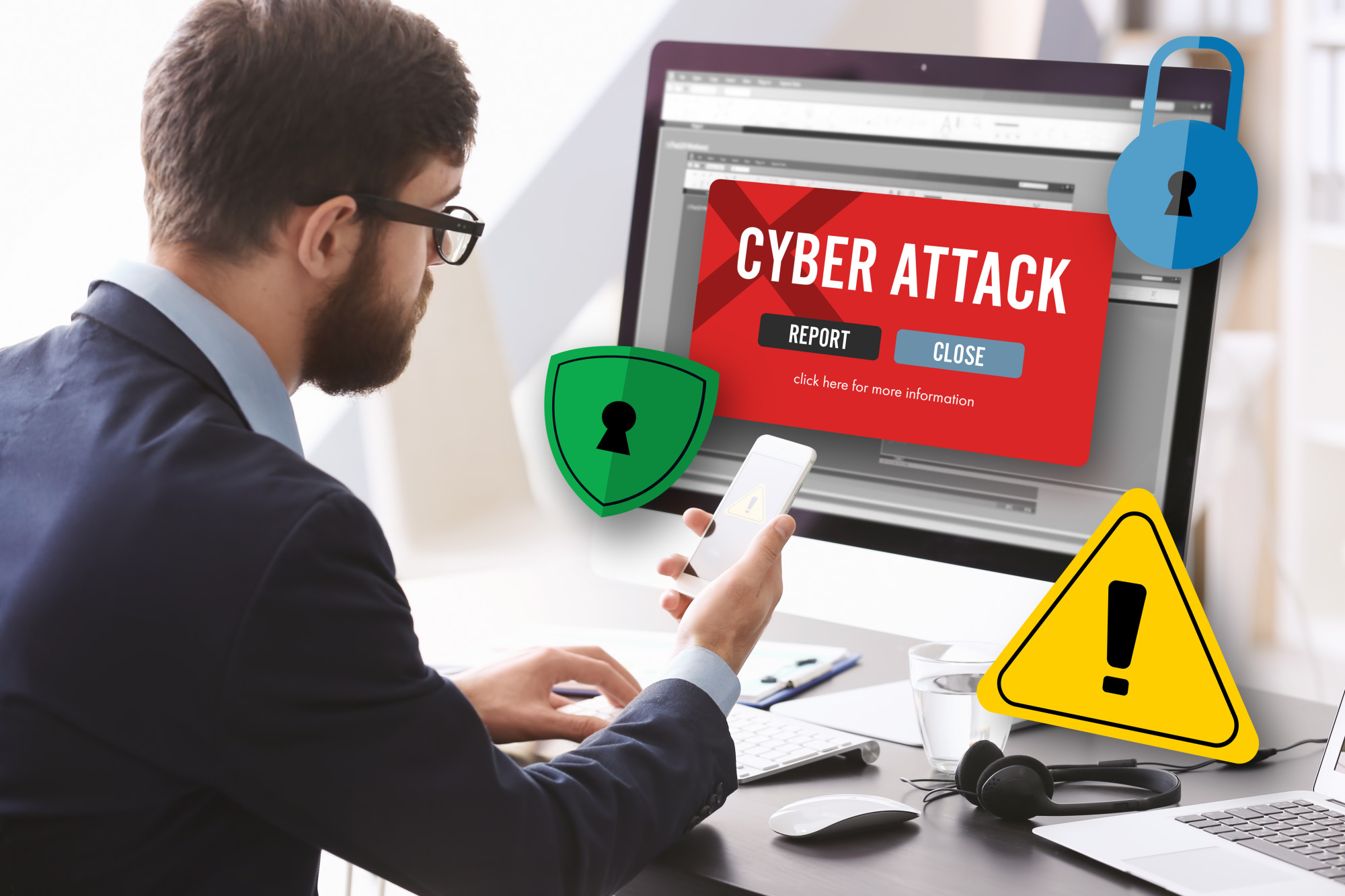
Top 9 Current Cyber Threats to Your Online Security
You might think you have a strong cybersecurity plan in place thanks to things like antivirus software, restrictions to websites your employees can and can’t access at work, or even just because you’re in compliance with basic industry regulations.
However, the reality is usually quite different.
Cybercriminals are getting better at what they do, and are constantly finding new ways to exploit even the most recent advances in cybersecurity.
But in order to avoid cyber threats, you must first know how to identify them.
Read on to learn about some of today’s top cybersecurity risks. You may be shocked by just how unprepared you are for some of them.
Contents
1. Phishing Attacks
Email phishing is still one of the biggest cyber threats in the world, and you need to do everything you can to prevent it.
Phishing hackers send emails with malicious links that, when clicked, download malware and viruses onto your office’s entire network.
To avoid this disaster, instruct employees to avoid opening personal emails at work, and to be wary of clicking on links in emails from anyone they don’t know.
As hackers become more sophisticated, it’s even possible for them to send phishing attack emails from senders that look like known contacts to your employees. Instead of directly clicking on a link in any email, hover over it first. If it’s a link you know and trust, proceed.
If not, delete the email and block the sender.
2. Third-Party Vendor Malware
Third-party vendors and apps like Square, Venmo, Paypal, and countless other options make collecting payment and monitoring customer data much easier.
Unfortunately, many companies don’t know that they’ll still be held responsible even if one of the third-party apps/software programs they use is hacked.
Check out this post to learn how to prevent this from happening to your business.
3. Public WiFi Networks
Many people just don’t realize the level of cyber risk involved with using public WiFi.
It may be convenient, but because there’s no password in place, it’s incredibly easy for hackers at the table next to you in the coffee shop, public WiFI also leaves your data quite vulnerable.
instruct employees who work on out-of-office devices — including smartphones — never to connect to a network that doesn’t require a password.
4. Ransomware Attacks
As the name implies, in a ransomware attack, you don’t get access to your data back until you’ve paid the hackers an often hefty sum.
Hackers hold your data hostage, leaving you in direct violation of industry compliance.
To avoid ransomware, we suggest constantly monitoring site logins and even hiring a professional IT service to consistently back up your data.
5. IoT Threats
Since IoT technology is still relatively new, there are lots of security flaws in many devices.
Because these devices connect to the Internet, hackers can easily break into them. This is especially true if you use multiple IoT devices in your business.
To avoid this, update software, enable real-time management and device access monitoring, and rely on UBA and IAM programs that only allow certain people in your office to access these devices.
6. Poor Password Planning
Is your password on this list? Can’t remember the last time you changed it? Does it fail to contain numbers, capital letters, or special characters?
If so, then you’re constantly at a high level of cybersecurity risk. The same thing goes if you use the same password for multiple accounts, or if you don’t have two-factor authentication available.
Meet with your team and make a stronger password policy today.
7. Formjacking
Most websites have fillable forms to make checking out, asking questions, or even signing up for email newsletters easier on customers.
If handled improperly, these forms can present serious cybersecurity issues. Hackers can easily break into these forms and insert their own lines of code, allowing them to steal customer credit card numbers as passwords.
To prevent this, consistently conduct penetration testing and use SRI tags to make sure website files and forms are safe.
8. Failure to Update Software Patches
We get it — having to update your software all the time is annoying.
But so is losing all your data and jeopardizing the future of your company with a lawsuit from customers who had their information stolen by hackers.
Always run software updates as soon as their available, as they’re designed to address security threats that your current software can’t always prevent.
Or, take advantage of one of the top cybersecurity trends and turn on auto-update. You can also work with an IT company/hosting platform that runs these software updates for you.
9. Your Own Employees
Perhaps the biggest cyber threats don’t come from hackers and other cybercriminals, but rather from your own employees.
Sometimes, this is a result of negligence, ignorance, or just a simple mistake.
But other times, employees intentionally steal passwords, customer information, or infect your system with malware. They may be trying to “seek revenge” on you for being let go or for not getting a raise, or they could even be working with hackers.
Make sure you have a plan in place to properly monitor your employees, and implement ongoing cybersecurity training throughout the year.
Don’t Let These Cyber Threats Destroy Your Business
We hope this list of some of the most troubling cyber threats has caused you to take a much closer look at the steps you’re currently taking to properly secure your data and websites.
Need more advice on what to look for in a professional IT service? Concerned that the software you’re using isn’t as secure as you’d like it to be, and ready to make a change?
No matter what field you work in or the target market you serve, you must take security seriously.
Bookmark our blog to make sure you stay up-to-date with the latest security threats and solutions.


Comments are closed.